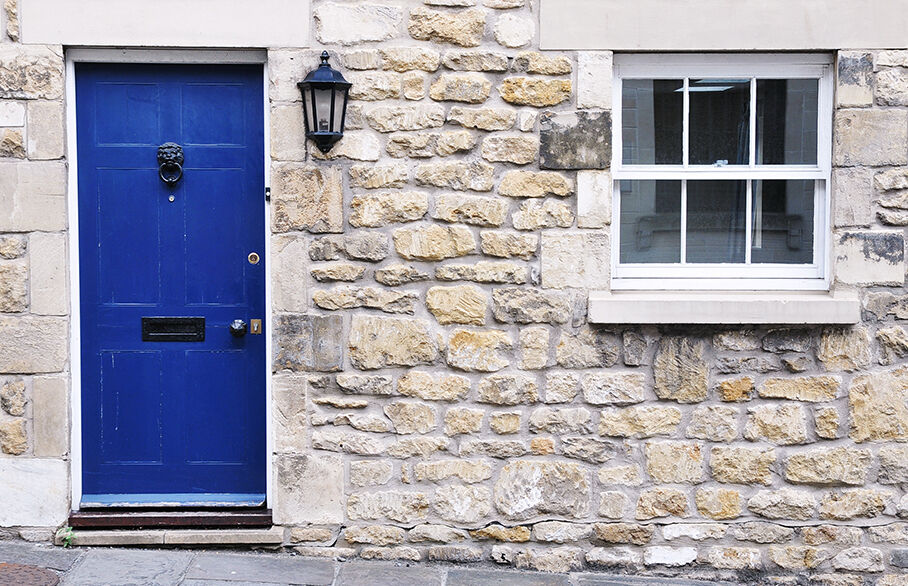
There have been a number of stories in the media recently about landlords selling up. Some have exited the market over the past few years because of tightening legislation and increased taxation, while others have been prompted to make the decision this year due to rising mortgage rates and concerns around the Renters (Reform) Bill that’s currently making its way through Parliament – albeit very slowly (see box below).
But we know that a lot of landlords have simply come to the end of their Buy to Let investment journey. Those who began investing in the late ‘90s when Buy to Let mortgages first became available and in the rush of the 2000s, have now held their properties for 20-25 years and are nearing or already in retirement. Many have achieved their financial investment goals and, for them, selling around this time was always part of their plan.
If you’re currently a landlord and wondering whether to hold or sell, or you’re considering buying an investment property, here’s our round-up of the rental market today and why we believe Buy to Let still stacks up as a good investment.
Demand is high, rental growth is strong and prices are good
With an ‘ongoing chronic imbalance between supply and demand’ (Zoopla), average rents have been continuing to rise. In May, year-on-year increases reached their highest level since the ONS started recording this data – up by 4.7% in England (excl. London), 5% in Wales, and 10% in Northern Ireland (year to March). For new lets, the UK average annual increase was 10.4% in the year to April (Zoopla)
Although growth is expected to slow towards the end of the year, average rents as a percentage of earnings are a reasonable 28.3% and – even with the cost-of-living crisis - a majority of tenants are saying they’re finding it ‘somewhat’ or ‘very’ easy to pay their rent (Zoopla)
As far as capital values are concerned, growth has been broadly strong across the UK for some time. Land Registry data shows that in the five years from January 2018 to December 2022, the average UK sold house price went up from £224,544 to £290,672 – an increase of 29.4% or just under 6% a year on average. So, although Zoopla is reporting that sellers are now having to accept offers below their asking price (3.8% below in June) and predicting that prices will drop by up to 5% through the rest of this year – mainly due to the knock-on effect of rising mortgage interest rates - this could be seen as a market correction more than anything else.
So, as a landlord, even if your expenditure is currently increasing, the reality is that your rental income should still be strong and you’re likely to have seen a decent increase in your equity if you’ve had the property for five years or more, which should more than compensate for any dip in your rental profits.
Now let’s look at some of the other key benefits of Buy to Let and why property could continue to be a good investment for you:
- It can help give you a balanced investment portfolio. There are lots of different ways to invest money – including shares, pensions, ISAs, business start-ups and precious metals – and it’s always good to spread your risk. So, if you’re looking for a long-term investment, Buy to Let property could work well for you.
- You can prioritise when and how you want to realise your returns. If you’re looking primarily for an investment that will generate the best monthly profits to supplement your income or pension, you can look for a rental property that will deliver a high yield – on the understanding that you may have to compromise on the level of capital growth over time. On the other hand, if growing your capital so that you end up with a decent lump sum in 15 years or so is your priority, you can choose a property that’s likely to deliver that, while covering its costs month-to-month.
- It’s a financial investment that allows you to leverage the bank’s money. For virtually every other type of financial investment, you have to put up 100% of the capital yourself. But with property, you can leverage the bank’s money and still keep all the profit (less tax, of course!).
As a simplified example: If you have £60,000 and invest it in shares, when the market rises by 10%, you make £6,000. But if you put that £60,000 down as a 25% deposit on a Buy to Let property and borrow the remaining 75% via a mortgage, you can secure an investment worth £240,000. Then, when the market rises by 10%, you make £24,000 – you benefit from the growth on the bank’s money as well as your own. Of course, you have to make mortgage payments and there are other costs, taxes and fees, but when you factor in rental income that can cover most of those costs, it’s clear that investing in property with a mortgage can boost your returns.
- You can add value to your investment at the start. Making money in property is all about buying the right thing, and if you can buy a property at below its true market value – e.g. by finding a motivated seller or securing a discount with a cash purchase (you can mortgage the property later) – you’ll immediately gain equity. Or you could buy something that needs work and add value quickly by making improvements that add more to the market price of the property than they cost.
- Mortgage rates should come down. Although mortgage interest rates are currently higher than they have been for more than a decade, as inflation subsides and the bank base rate comes down, mortgage rates should follow suit. So, if you can find an investment that stacks up in terms of cash flow in this market, you’re likely to see better profits in the future.
Making a success of Buy to Let relies on you treating it like any other business. You have to carry out in-depth research, understand your market and be able to analyse figures so you can budget well and track your property’s performance over time. We’d recommend that before you buy any property investment, you:
- Carry out really good research on local prices, rents, supply and demand, working with expert sales and letting agents in the area
- Analyse likely income, expenditure (including a 10-20 year maintenance forecast) and returns over the next 1, 3, 5 and 10 years to make sure the property will cover its own running costs and generate a profit on top
- ‘Stress test’ the figures, factoring in longer-than-average void periods and higher mortgage rates to see where the break-even point is, and make sure you have a good financial cushion so you can always afford to maintain the property over time
Renters (Reform) Bill – second reading delayed
Various proposals in the Renters (Reform) Bill have raised concern in the industry – notably the ending of fixed-term contracts, which could adversely affect student HMO landlords in particular. However, it’s looking increasingly unlikely that we will see this Bill coming into force any time soon.
The Government has announced all parliamentary business up to the summer recess and this Bill has not been included. And with the party conferences and a budget in the autumn, there’s a distinct possibility the second reading of the Bill may not happen until 2024. Normally, a bill takes around a year to progress through Parliament and become an Act, then usually starts to take effect around six months after that. And with the next general election likely to be in January 2025, if Labour comes into power, the RRB could be further delayed, amended or scrapped altogether. We will, of course, keep you posted on the Bill’s progress.
If you’d like to discuss any property investment or need some help understanding the local market, just get in touch with the team at your nearest Reeds Rains branch – we’re always here to help.
YOUR PROPERTY MAY BE REPOSSESSED IF YOU DO NOT KEEP UP REPAYMENTS ON YOUR MORTGAGE.
Your initial mortgage appointment is without obligation. Embrace Financial Services normally charge a fee for their services; however, it is payable only on the submission of your mortgage application. The fee will depend on your circumstances but the standard fee is £549. Complex cases usually attract a higher fee. Embrace Financial Services will discuss and agree the fee with you prior to submitting any mortgage application.
Please be aware that the information provided within these archives has been pre-published, as of the date published on each article. The information contained within, including references to taxation, legislation, regulation, or any other issues or concerns may no longer apply.
The Reeds Rains Content Marketing Team



